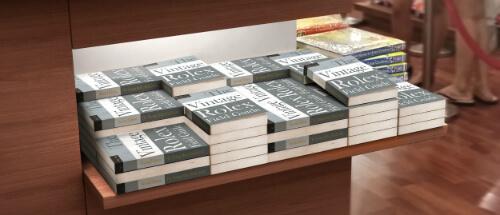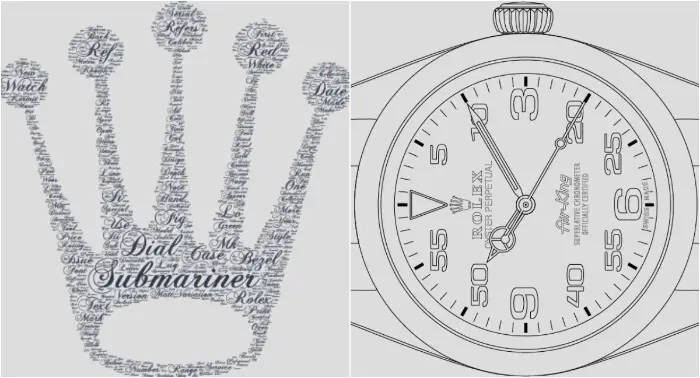
5 Steps To Self-Publishing Success
It’s never been easier or cheaper to publish a book and the traditional publishing houses hate it!
Independent self-publishing is experiencing strong growth with a 40% increase in 2018 over the prior year. I’m not talking about the free PDFs you get in exchange for getting spammed, but real books on the shelves of real brick and mortar bookstores. These are actual books you can autograph, dedicate and gift wrap.
Indie-self-publishing has become synonymous with Amazon Kindle Direct Publishing (KDP). I am not talking about this. In fact, KDP has become a bit of a tar pit, trapping and ultimately killing otherwise good books. Even books that survive the pit, are destined to live out their existence locked in the Amazon Kindle ecosystem. Serious nonfiction books don’t do well in this ereader format or this marketplace.
The growth and money is in nonfiction print books. Reference books, picture books, cook books, travel books, How-To books, crafting books, pet books, biographies, travel guides, business books and so the list goes on. In fact, pretty much every genre except fiction - sci-fi, chick-lit, youth-lit, terror, romance, erotic thrillers etc. Nonfiction books command higher selling prices and typically cost more to produce. But here’s the big secret - not a lot more. In fact, I was able to get my nonfiction Print Edition onto bookstore shelves for under $500 in less than 5 months. Here’s how…

Step 1. Assess The Competitive Landscape
Pick one or more non-fiction genres and research them. Specifically this means picking subjects you have some passing interest in, as you’ll be spending considerable time immersed in them. Don’t pick things that bore the pants off you, even if you think it’s an uncompetitive genre with lots of opportunity (Dutch Accounting Regulations and Bookkeeping Practices of the late 19th Century, etc).
Next, search Amazon, visit your local library and one or more book stores. You’re trying to answer the question, “Is this genre overcrowded?”. It’s ok to find lots of books but not ok if you find hundreds of books. Amazon returns over 9,000 results for "books on programming for the web" but 52 results for "books on vintage watch collecting". You want to validate demand but don’t want to take on intense and established competition.
Pay close attention to what you find and specifically what you like - Do you like big books or small? Hardcover or paperback? Large fonts and white space or small and tightly packed? Do you like wide margins or narrow? Where do you like the page numbers? Do you need an Index or will a Table Of Contents suffice? Make a mental note of what you like and take measurements with a ruler! Take phone photos of books and pages you like. You’ll need these notes in Step 4.
Pro Tip: An index is complex and expensive to produce. Think carefully about whether you really need one. The same goes for hard covers and dust jackets.
Assess the price range, and note the highest and the lowest priced books in the genre (sort search results by price). You definitely don’t want to be the cheapest but you do want your title associated and listed alongside the best in the genre.
Next, Google the author of the most expensive books to see if they really have the credentials, qualifications and track record to command a premium price. Is it even a real name or a pen name? This will help you decide if you can (or want) to compete in the top end of the price range. For me, I was comfortable competing with a couple of dozen titles in my target genre. Most were on Amazon, several were in Barnes & Nobles and Waterstones, and a couple were in my local library. Based on what I found, I felt I could come up with something of similar quality and length (page and word count).
I chose to price my work in the middle of the range. I also decided to write under a pen name as I didn’t want to be a brand or to get famous. And if it crashed, bombed and burned, no big deal. It seems like a lot of authors feel the same and there are far more fake pen names on the shelves than most people realize.

Step 2. Plan Your Book Architecture
In Google Docs, write out what your Table of Contents page would look like. You’ll have an idea of what should be in the Beginning, Middle and End based on the competing titles you found in Step 1. This is called “stubbing out the manuscript” and will give you a skeleton framework or blueprint for your book. You’ll have Chapters, Sections and Subsections with appropriate headings.
For me I ended up with thirteen chapters. Chapter 1 was an Introduction and Chapter 13 was an Epigraph. This left me with 11 chapters for the main body of the book. You want to aim for about 40,000 words for the main body content with each chapter being roughly the same length. Depending on design choices in Step 4, this will get you to approximately 200 pages.
Pro Tip: Keep in mind that the more pages and color images (ink) the higher the production cost and subsequent sale price. Are the highest priced books in the genre expensive to produce? It’s possible the most expensive books have a low profit margin for the author. It’s also reasonable to assume the cheapest books have very modest profit margins too.
If you want to turn a profit, you want a book that’s not too expensive to print and yet priced attractively compared to others on the same shelf. Oh, and you probably need to win a few awards and sell them by the truck load too!
Step 3. Cranking Out Some Words
This is the actual writing and production of the body of the book. In addition to getting words down you want to be gathering images, making any tables or lists and sketching illustrations or diagrams. I hand-drew placeholder images and diagrams in a notebook, photographed them with my phone, and embedded these placeholders in my Google doc. You’re aiming to fill out all sections and subsections of the Table Of Contents, focusing on the narrative. As the document grows, create a separate document for each chapter.
Pro Tip: DON’T get distracted by formatting or layout. All visual presentation stuff comes much later and any time you spend on it now will be utterly wasted. Focus on writing narrative content only. Use Google shortcut Ctrl+Shit+C to give you a running word and page count.
If you have photo images you want to use, store them separately outside the Google doc. They need to be high resolution (preferably 300 ppi) but web resolution will do (72 ppi). Do not keep them in your word processor document as they risk getting resized and resampled. MS Word is especially bad for this. There are multiple ways to store and organize your digital files.
Take time to carefully craft Front and Back Matter. This is the standard boilerplate text you find in almost every book. This will include a Copyright Notice, Acknowledgements, Dedications, Author Bio, and even links to your website or Social Media accounts.
A final step will be to select a title. Potential titles will have been circulating in your head since Step 1 and now is the time to select one, along with any subtitle and strapline. If you can’t decide, use a free Google Survey and post a poll to your social media for input.
You will also need to write the back blurb text that appears on the back cover. Don’t underestimate how important this short piece of text is. It is the main reason people in a bookstore choose to buy your book, rather than put it down and pick up the next one. Consider paying for help and hire someone (on r/hireawriter, for example).
Pro Tip: Use the Grammarly Plugin or Desktop App. Don’t feel you have to accept every recommendation, only most of them. You want to minimize spelling and grammar issues early. You don’t want to be paying an editor to fix trivial things.

Step 4. Correct, Cleanup & Package
If you completed Step 3 you have what’s known in the trade as a working manuscript. If you’ve got this far and managed to produce roughly 40,000 words (+/- 20% depending on your use of tables, charts and illustrations etc.) you’re well on your way to succeeding as a published author!
This step turns your working manuscript into a first draft and is where you’ll need to start spending some money. Depending on your skills, you may need to buy at least some of these professional services. This will involve interviewing and selecting professionals to work with. To save yourself answering the same questions dozens of times, write a short design brief you can reuse and share in advance of any discussions.
Pro Tip: A design brief will include things like, the provisional title and back blurb, description of the genre, where you want to position your work with a price range and target, desired trim size, page count, and any photos you took in Step 1. List any colors, styles or themes to avoid. Also add a description of your target audience. A target audience description might read something like, “Millennial, Gen-Z, urban dwelling white collar professional, educated to advance degree, top quartile earner, married parent, home owner…”. Aim to keep the whole design brief within two pages.
Editorial Review
There are several different types of editing services. Don’t get too hung up on the differences or you’ll waste valuable time and money. Focus on finding a Copy Editor. Even if you write excellent English prose, you need to engage a third party. Only an independent and paid third party will tell you if your baby is ugly and what to do about it. Don’t ask your spouse, parent, friend or teacher (even if they’re in the business and you agree to pay them). You need sobering, brutal honesty and don’t be shy or defensive about the feedback you receive.
The copy editor will help with questions like- are you writing in US, UK or International English? Does your structure flow or do you need to re-sequence sections? Is your use of tense consistent? Are sections too wordy, duplicative or unclear? Have you answered basic questions only an outsider would have?
Pro Tip: Be prepared to spend at least US$250 and spend some time finding someone on Fiverr, Upwork or Reddit. Don’t obsess over finding the perfect editor, just one that can demonstrate some competence and references. It’s ok to ask for sample work, set them a deadline and to pay up to half in advance. Whatever they tell you is probably going to sting, so brace yourself and be ready to act on their recommendations. Don’t argue or feel you have to justify yourself. Just take their input and decide which you’re going to accept. Then press on.
Graphic Illustration
If you plan to use diagrams, pictures (not photos) or charts, you need to have them turned into vector illustrations. I took the time to learn how to do these in Adobe Illustrator (or Open Source, free Inkscape) so I could reuse them in my marketing and promotional material later. However, I’m not arty and outsourced some drawings to a subcontractor on Fiverr. I spent about US$20 per drawing and specified I wanted the results delivered as PDF, AI, SVG and PNG file formats.
This simple word cloud was created by feeding Chapter 1 into www.wordart.com. After some experimentation, I came up with a result I liked and downloaded the vector for US$5. This became the background watermark image for the cover.
Example illustrations as vector diagrams:

Pro Tip: If you only have a few simple illustrations there are many other simple vector drawing tools you can try, like MS Visio, Omnigraffle and even Google Draw. This can be a much more affordable option than taking or licensing high quality photography.
Interior Design & Type Setting
This involves making design choices like trim size, number of columns, font selection, where to place tables and images, and how to wrap text around them. Your book text will be imported along with your images and illustrations. Layout and typography is a skilled job and will most probably be done in Adobe InDesign. If the book is not complex you could do it in Open Source free Scribus. However, Scribus has poor support for tables. If you want to use large complex table formats, Scribus will choke.
Book designers will pay little to no attention to your written content or any spelling errors or typos. So make sure the text copy is good and clean before sending it to them.
Desktop Publishing tools will export your final work into a file format to submit to a Print On Demand Service (POD). Typically this is a PDF/X-1a:2001. This is NOT a run of the mill PDF you can just SAVE AS from a word processor.
Pro Tip: Learn some basic proficiency in a desktop publishing tool. You’ll want to be able to perform some minor tasks yourself (such as small corrections or adjustments) rather than paying and waiting for a designer to do them. You can expect to spend anything up to US$2,000 on professional interior book design. I did it myself with satisfactory results but I’m sure a professional typesetter could have done a better job (had I had the budget).
Book Cover
The prevailing advice is to pay a designer to do this for you, and the people giving this advice are usually writing fiction and targeting e-readers. In this case, their advice is right for reasons I won’t get into here as we’re interested specifically in non-fiction. Based on research you did in Step 1 you can easily do your own book cover with free services like Canva. If you have zero confidence in your own creative aptitude, then yes you probably need to outsource it.
Pro Tip: Use one of the designers you already engaged above rather than introducing yet another one. The going rate for a book cover is about US$250 and in most cases they will modify a design template they either downloaded for free or paid a few bucks for.
Step 5. Going to Market
There are several Print On Demand businesses you can choose from. For the sake of simplicity, I chose to go with Ingramspark (IS). My rationale was this:
- I could buy a single and low priced ISBN number ($85). Most places will try to make you buy them in bundles or publish under their own ISBN number. You definitely want your own to retain full ownership and control over your work.
- They can publish and distribute both Print and digital EPUB editions.
- As one of the world's largest book printers and distributors, IS would distribute my book everywhere. It would be available on Amazon as well as a host of other book outlets like Barnes & Noble, Waterstones, Target, Walmart, Book Depository and countless others.
- IS will drop-ship orders. I can sell my book direct from my website (even Ebay and Etsy) and IS will print individual copies and deliver them direct to my customers. They also offer a way to print a personalized and customized opening page. Great for prizes, gifts and promotions.
Pro Tip: Before you sign up to IS and submit your PDF, do a google search for “Ingramspark coupon code free setup”. Finding an active coupon will save you US$45.

As you submit your two files (the book plus the cover) you will be prompted to purchase your ISBN and enter a whole bunch of details about pricing, discounts and returns. The defaults are sufficient in nearly all cases and can be changed later.
You will also be offered the chance to market your book for an additional $80. Doing this will give you an entry in the Ingram trade magazine, Ingram Advice. It gets distributed to book retailers and lets them know which new books are available to order and stock as inventory. There is debate about whether this is good value for money. I recommend you just spend the $80. At this stage of the game, it’s a trivial expense compared to everything else and if you’re targeting real book stores around the world, this is the way to reach them.
After a short technical validation and review stage (a couple of days) your book will be available for ordering. Within a few days it will be visible on Amazon.
Pro Tip: As soon as your book is available, buy one through the IS portal. Pay for the expedited print services (1 day) and expedited shipping. You will be surprised at how different your work looks in print compared to a digital version. Check obvious cosmetic things like color, typos, font sizes etc. Any changes you want to make need to be submitted quickly before retailers begin ordering inventory.
In my case I decided I didn’t like the gloss finish of the cover and wanted to change to matte. I was unhappy with the spacing and margins around the blurb on the back cover. I also noticed a couple of typos in one of the long reference tables. As I had learned (on YouTube) how to use Adobe Illustrator and InDesign, I was able to make the corrections myself and re-generate the PDF. In a pinch you could do this by taking advantage of Adobe’s free 30 day trial for these tools, or there are plenty of PDF editing alternatives.
Submitting revised files through the IS portal is easy, but you are charged US$25 for each file and they have to go through the validation process again (two days). My corrections ended up taking about a week and cost me US$50. After the revisions were approved and my book was again available to order, I bought another expedited review copy and was much happier with this version.
Conclusion
At this stage your book is now available and on sale at all the world's biggest book outlets. If not in stock and displayed on shelves, it can be ordered by customers that walk in and ask for it. Try it for yourself! Now, take a moment to congratulate yourself and celebrate the fact you’re a published author. For this is the moment the really hard work begins - Marketing & Selling your book. I am currently deep in this phase (Nov, 2019) and will write another article on what this involves and how to make it work for you!
If you found this Mod helpful, you might also enjoy learning about Morning Tundras book- The Vintage Rolex Field Guide. Please share this Mod with your network using the social media icons below. Any comments or questions? Let us know on Twitter!

